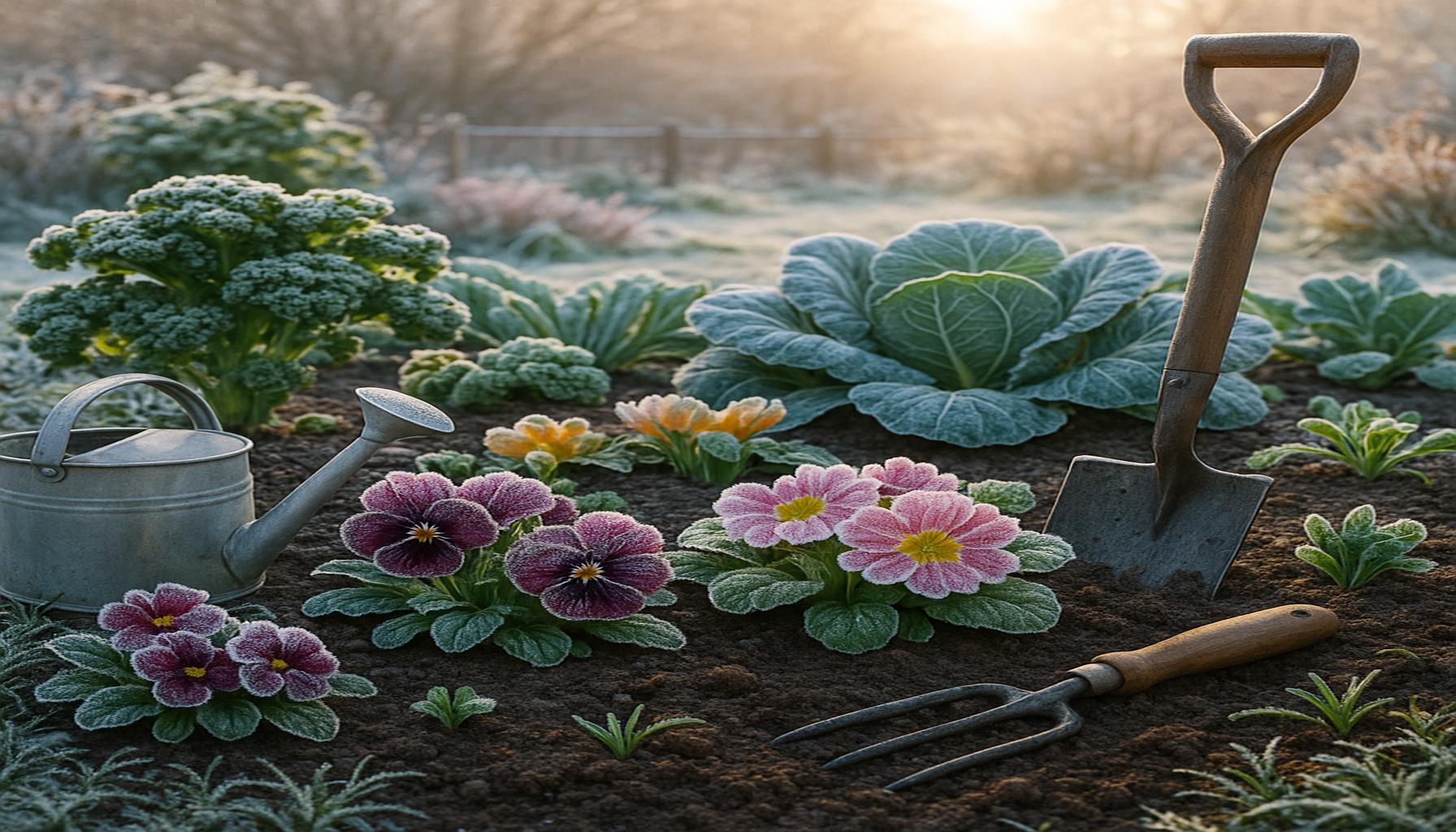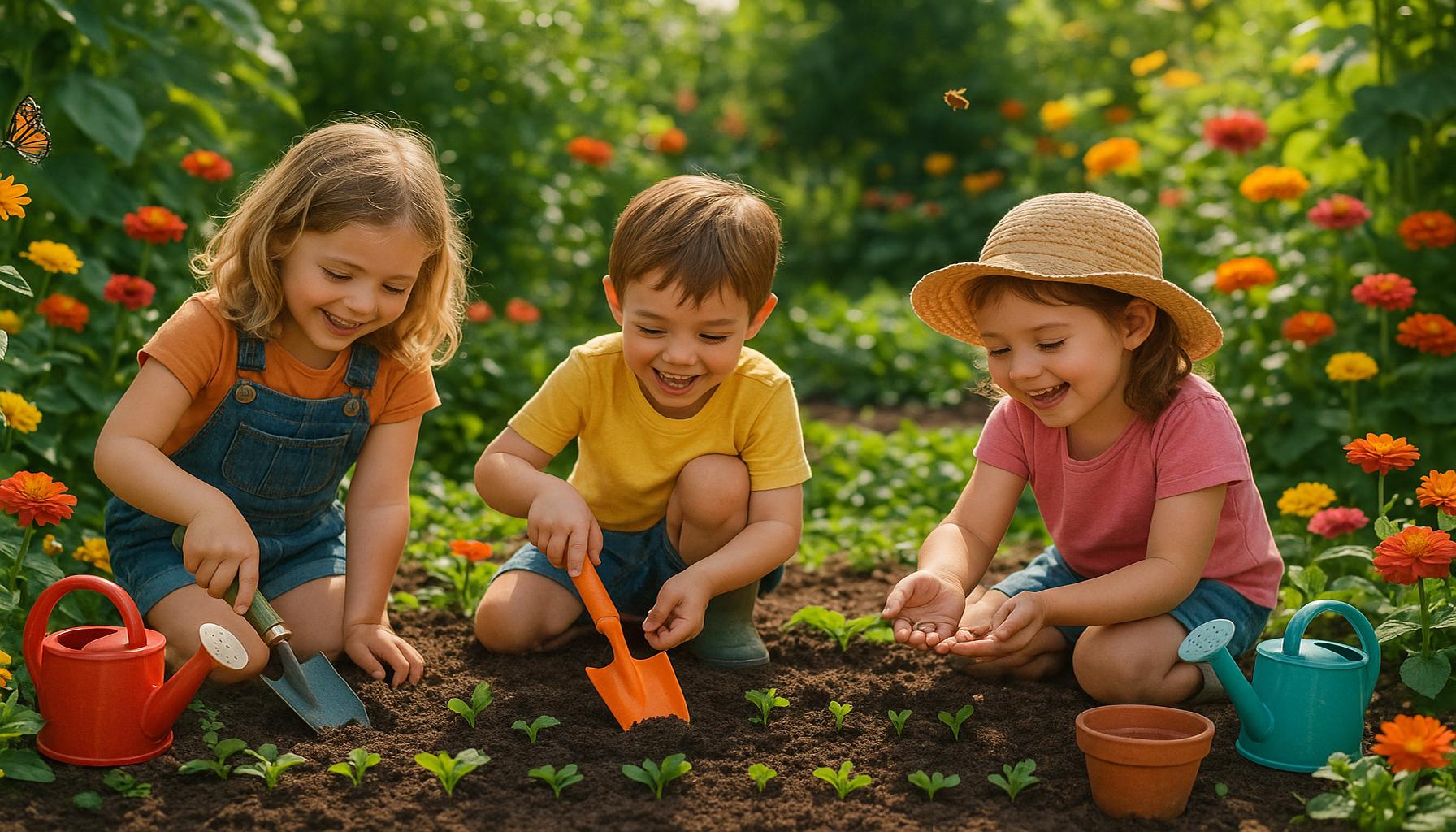Aquatic Gardening: Creating a Charming Ecosystem in Ponds and Fountains

Discover the Art of Aquatic Gardening
Transforming your backyard into a serene oasis can be achievable through aquatic gardening. This unique approach combines nature and design to create vibrant living spaces featuring ponds and fountains. It’s not just about aesthetics; it’s about fostering a thriving ecosystem that contributes to the environment.
What is Aquatic Gardening?
Aquatic gardening is the practice of cultivating plants specifically designed for water environments. This encompasses a variety of plant types that can significantly impact the ecological balance in your garden.
- Floating plants: Water lilies and duckweed are not only visually appealing but also serve essential functions. Water lilies provide shade, which helps control algae growth, while duckweed offers a compact habitat for small creatures, attracting a diverse range of wildlife.
- Submerged plants: Species like anacharis and hornwort are crucial in maintaining water quality. They help oxygenate the water, which supports fish and other aquatic life. Furthermore, these plants can absorb excess nutrients, effectively preventing issues like eutrophication.
- Marginal plants: Reeds and cattails are often found along the edges of ponds, acting as natural filters. These plants not only stabilize the soil and prevent erosion but also provide essential cover and breeding grounds for various forms of wildlife, such as frogs, insects, and birds.
Incorporating elements like fountains can further enhance the charm of your aquatic garden. The sight and sound of flowing water create a calming environment and improve oxygen levels in the water. Fountains can also attract birds and butterflies, adding color and liveliness to the space.
Benefits of Aquatic Gardening
Engaging in aquatic gardening offers numerous advantages beyond mere aesthetics, making it a worthwhile pursuit for gardeners of all skill levels.
- Creating a peaceful retreat for relaxation and reflection, allowing homeowners to escape the hustle and bustle of daily life.
- Providing habitat for local wildlife, including frogs, dragonflies, and a variety of bird species, which can promote biodiversity in the urban landscape.
- Enhancing property value and landscape appeal, as well-maintained gardens featuring water elements are highly attractive to prospective buyers.
As you embark on this wonderful journey of aquatic gardening, you’ll discover endless opportunities to learn and explore the complexities of maintaining a balanced ecosystem. Resources such as local gardening clubs or online forums can provide valuable insights and support. Whether you are a novice gardener or an experienced horticulturist, creating your aquatic oasis offers a fulfilling and rewarding experience that extends beyond mere decorative appeal. Dive deep into the world of aquatic gardening and unlock countless possibilities right in your backyard!
Dive Deeper: Click here to uncover the evolution of crafting
Crafting Your Aquatic Paradise
To successfully embark on your aquatic gardening journey, understanding the foundational aspects of this art is essential. The heart of aquatic gardening lies not only in the plants and water features but also in creating a balanced ecosystem where flora and fauna coexist harmoniously. Before clearing your backyard to install that dream pond or fountain, consider the important aspects of site selection, design, and maintenance that will propel your aquatic retreat into a lively and thriving environment.
Choosing the Right Location
The first step in creating your aquatic garden is selecting an appropriate location. Aim for an area that receives ample sunlight, ideally around six hours per day, as most aquatic plants thrive in these conditions. However, ensure that your chosen spot is shielded from strong winds or heavy debris, which can disrupt the water balance and introduce contaminants. Additionally, think about proximity to electrical sources if you plan to incorporate fountains or pumps.
Design Ideas for Ponds and Fountains
When it comes to design, the possibilities are as vast as the water you will be working with. Here are some essential components to consider:
- Pond Shape: Naturalistic designs often use irregular shapes, making the pond appear as though it was sculpted by nature itself. Alternatively, formal geometric shapes provide a modern ambiance suitable for contemporary backyard aesthetics.
- Depth Variation: Incorporating varying depths within your pond can facilitate different plant selections and habitats. Shallow areas are ideal for marginal plants, while deeper sections allow for submerged species, promoting biodiversity.
- Fountain Features: Fountains can serve as a focal point in your garden. Choose styles that resonate with your overall garden theme – be it whimsical, rustic, or sleek. The soothing sound of bubbling water can create a tranquil atmosphere, attracting both wildlife and relaxation for the gardener.
Choosing the Right Plants for Your Aquatic Ecosystem
Once you have the design established, selecting the right plants is crucial. Your choices will influence not only the visual appeal but also the ecological health of your pond or fountain. Here are some popular plants to consider:
- Water Lilies: These stunning perennials add color and provide floating shade that tempers algae growth.
- Lotus: Known for their large, fragrant flowers, lotus plants are ideal for creating a serene and picturesque atmosphere.
- Native Plants: Incorporating regional native plants can support local wildlife, mitigate invasive species risk, and ensure lower maintenance needs. They are inherently suited to local conditions, creating a more balanced ecosystem.
By thoughtfully planning the elements of your aquatic garden, you will maximize the charm and functionality of your backyard pond or fountain. This initial stage of your aquatic gardening adventure lays the groundwork for sustained beauty and a vibrant ecosystem that you and your community can enjoy.
| Advantages | Description |
|---|---|
| Natural Filtration | Aquatic plants act as natural filters, removing impurities and enhancing water quality, thus contributing to a healthier ecosystem. |
| Biodiversity | Ponds and fountains foster a rich diversity of life, from insects to amphibians, promoting a balanced food web and attracting pollinators. |
| Aesthetic Appeal | Creating a captivating landscape with fountains and ponds not only enhances property value but also offers a serene environment for relaxation. |
| Learning Opportunity | Aquatic gardening presents an excellent hands-on educational experience for children and adults alike, enhancing understanding of ecosystems. |
Creating enchanting aquatic gardens, whether in small backyard ponds or large fountains, allows individuals to cultivate these significant benefits within their environments. Through the vibrant interplay of water and plant life, one can not only beautify their surroundings but also play an active role in supporting ecological health. This pursuit intrigues many gardening enthusiasts and nature lovers, prompting deep engagement with the captivating world of aquatic ecosystems. Exploring the nuances of your aquatic garden may unveil even greater insights into species interactions and habitat preservation.
DIVE DEEPER: Click here to uncover the emotional depth of musical composition
Maintaining Your Aquatic Ecosystem
After establishing your enchanting pond or fountain, maintaining it becomes essential for preserving the ecosystem. This maintenance not only ensures the beauty of the garden, but it also safeguards the delicate balance achieved between the plants and wildlife within. A successful aquatic gardening experience will revolve around keeping your ecosystem healthy and thriving, so let’s delve into some key maintenance practices.
Water Quality Management
Water quality is fundamental to the health of your aquatic garden. Regular testing of the water’s pH, nitrate, and ammonia levels will help prevent algae blooms and keep your plants thriving. Optimal pH levels for most aquatic plants lie between 6.5 and 7.5. If your readings fall outside this range, consider using pH-altering additives or natural methods like introducing certain plants that can help stabilize the levels. Moreover, maintaining clean water through appropriate filtration systems will greatly enhance the longevity of your aquatic ecosystem.
Controlling Invasive Species
Invasive plants can pose significant threats to your aquatic garden. Species like yellow flag iris or water hyacinth might look appealing initially but can overcrowd and outcompete native flora. Regular monitoring and manual removal of these invasive plants will safeguard your dedicated plant species. Chemical herbicides are an option, but their runoff can damage the fragile water quality; hence, manual eradication is often recommended for eco-conscious gardeners.
Encouraging Biodiversity
One of the charms of an aquatic garden comes from its biodiversity. To support this, consider adding various habitats within your pond or fountain. Floating logs or submerged rocks can offer shelter for aquatic creatures like frogs and fish, while sandy areas can provide nesting places for insects. Creating these diverse environments not only enriches the aesthetic value of your garden but also benefits the overall health of the ecosystem. A rich community of wildlife can help with natural pest control and pollination, creating a self-sustaining ecosystem.
Seasonal Care and Preparation
Seasonal changes dictate specific maintenance tasks that need to be performed to keep your aquatic ecosystem flourishing year-round. As winter approaches, some plants may need to be trimmed back, while others, like hardy water lilies, can be left to withstand the chill. If you have tropical plants, they will need to be sheltered indoors. Conversely, preparing for spring involves reinvigorating your water garden by cleaning out debris and checking water quality after the thaw. Understanding these seasonal shifts is crucial for sustaining your aquatic garden.
Feeding Wildlife
An aquatic garden attracts a plethora of wildlife, including birds, butterflies, and beneficial insects. To support these visitors, consider implementing a dedicated feeding program suitable for local species. Simple feeders for birds and appropriate flora can encourage pollinators. Interestingly, plants like butterfly weed or bee balm are great additions known to attract pollinators, thereby enriching your aquatic ecosystem’s biodiversity and extending the seasonal color and interest in your garden.
By incorporating these layered aspects of maintenance into your aquatic gardening journey, you can create a thriving ecosystem that not only looks stunning but functions seamlessly. A well-maintained pond or fountain becomes a cherished haven, inviting both relaxation and education about the intricate balance of nature right in your backyard.
DIVE DEEPER: Click here to discover the art of upcycling
Conclusion
In conclusion, aquatic gardening presents a unique opportunity to cultivate a captivating ecosystem right at your doorstep. By establishing ponds and fountains, you can create not just a visual masterpiece but also a sanctuary for a diverse range of wildlife. As we’ve explored, effective water quality management, vigilant control of invasive species, and the encouragement of biodiversity are pivotal in nurturing this delicate balance. With an understanding of seasonal care and the importance of supporting wildlife through intentional planting, your aquatic garden can thrive throughout the year.
Moreover, engaging with your aquatic ecosystem fosters a deeper appreciation for nature’s complex interrelationships. Consider this an invitation to delve into the world of aquatic gardening—where every ripple and bloom tells a story of sustainability. By enriching your garden with native plants and creating habitats for local fauna, not only do you contribute to ecological health, but you also enjoy a verdant environment that’s abundant with life.
Ultimately, your efforts can lead to a self-sustaining ecosystem uniquely tailored to your local landscape. Whether you’re a beginner or a seasoned gardener, embracing the principles of aquatic gardening allows you to participate in the broader conversation about conservation and biodiversity. With patience and dedication, your pond or fountain can transform into a cherished retreat, a source of tranquility, and a testament to the beauty of nature’s harmony.


